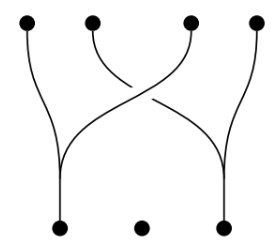Laxification
Posted by John Baez
Talking to my student Joe Moeller today, I bumped into a little question that seems fun. If I’ve got a monoidal category , is there some bigger monoidal category such that lax monoidal functors out of are the same as strict monoidal functors out of ?
Someone should know the answer already, but I’ll expound on it a little…
Here’s an example where this works beautifully.
Let , the augmented simplex category, be the category of finite ordinals 0, 1, 2, … and order-preserving maps between these. A famous fact is that is the ‘walking monoid’. In other words, for any strict monoidal category , strict monoidal functors
are the same as monoids in .
But another famous fact is that if is the terminal category made strict monoidal in the only way possible, lax monoidal functors
are the same as monoids in .
So, somehow is the “laxification” of : a puffed-up version of the terminal category such that lax monoidal functors out of can be reinterpreted as strict monoidal functors out of .
Indeed, combining these two facts we get a lax monoidal functor
$$ p: 1 \to \Deltaa11 \in \DeltaaA\hat{A}p: A \to \hat{A}g: A \to Xf \circ p : \hat{A} \to Xf: \hat{A} \to Xp\hat{A}$. I’m also imagining that some words like “monoidal nerve” and maybe “fibrant replacement” will show up.


Re: Laxification
If I’m not mistaken, your claim is a special case of Lemma B-1.1.6 in the Elephant, for which Johnstone doesn’t give a proof, “which is rather messy to write out in full generality”.
Johnstone talks about 2-categories rather than monoidal categories, but the construction for monoidal categories is a special case, since the general construction keeps the set of objects fixed, thus the 2-category associated to a monoidal category viewed as a 2-category is in fact a monoidal category again.
I think in general, the 1-cells in are paths in , and one intruces new 2-cells of the sort of and – thus relating paths to their composites.
The 2-cells of are then generated by the 2-cells of and the new 2-cells, subject to relations to enforce that is well-defined, and that is a lax functor.
The augmented simplex category is certainly a special case, maybe the constrcution can also be formulated purely in terms of this category rather than by generators and relations.
And I see a possible link to homotopy theory through the Thomason model structure on , since the construction of is used to reduce lax limits to 2-limits, and on the other hand homotopy limits of diagrams in wrt the Thomason model structure are are precisely lax limits, where the index category is viewed as a 2-category. But I don’t really see how this fits together.